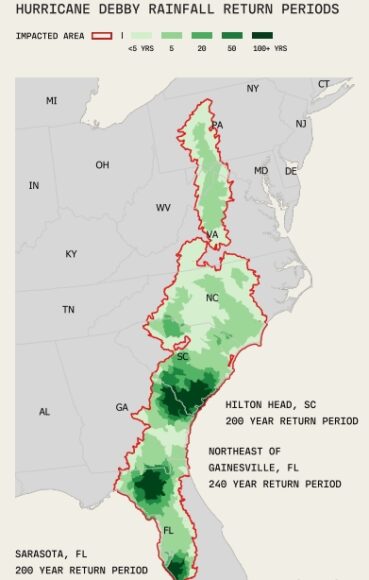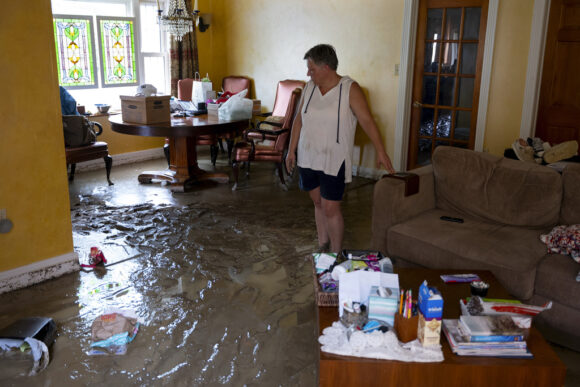More than three-fourths of properties flooded by Hurricane Debby were outside a designated flood hazard area and were likely to be uninsured for the water loss. Many of those properties were concentrated in spots seemingly far away from where the storm made landfall, including Sarasota, Florida; Savannah, Georgia; and Charleston, South Carolina.
That was the conclusion reached in a report from First Street Foundation, a nonprofit organization that uses computer modeling and loss data to assess risk from climate change and storm events.

“Losses from Hurricane Debby were disproportionately centered in the state of Florida,” the Aug. 12 report said. “The results of the First Street flood model simulation found $2.6 – $4.5 billion in losses from the event, of which $1.9 – $3.3 billion (~70%) is likely to be uninsured” and occurred outside of FEMA’s special flood hazard area.
Overall, the storm, which made landfall as only a Category 1 hurricane in the Big Bend stretch of Florida, has caused as much as $12 billion in damage, with some $9.7 billion outside FEMA’s designated flood zones, the report found. About 385,000 properties saw some level of water that reached the building’s footprint. Some 160,000 of those likely received damage, First Street reported.
“These findings underscore the necessity for a reevaluation of flood risk assessments and preparedness strategies in vulnerable areas,” the report said.
Other reports have noted that relatively few properties in the area were covered by private or National Flood Insurance Program policies. NFIP data show that the number of flood policies in South Carolina, for example, dropped by 1.4% over the past year, The Charleston Post and Courier reported.
“As Debby moved inland, the storm’s slow pace allowed it to drop significant amounts of rain over the Southeastern United States,” First Street said. “This led to catastrophic flooding, particularly in parts of Georgia and South Carolina, where several rivers overflowed their banks.”
One area that was unexpectedly hard hit by the inundation was Bradenton, Florida, south of Tampa. As waters rose to 48 feet behind the Manatee River Dam, local officials made the decision to release the pressure to avoid disaster. But the release caused significant flooding downstream and led to more than 200 water rescues, the report noted.
The full report can be accessed here.
Top photo: Ann Farkas surveys her flood-damaged home in Canisteo, New York, after remnants of Tropical Storm Debby swept through the area, creating flash flood conditions. (AP Photo/Craig Ruttle)
Related: Debby’s Florida Claims Already Near 12,000 as Yaworsky Says Market Is Strengthening
Was this article valuable?
Here are more articles you may enjoy.


 Tricolor Trustee Plans to Sue Founder for Auto Dealer’s Collapse
Tricolor Trustee Plans to Sue Founder for Auto Dealer’s Collapse  Toyota Unveils Concept LFA Supercar, and It’s Fully Electric
Toyota Unveils Concept LFA Supercar, and It’s Fully Electric  Asahi Sales Drop Worsens as Cyber Hack Disruption Lingers
Asahi Sales Drop Worsens as Cyber Hack Disruption Lingers  Zillow Deleting Climate Risk Scores Reveals Limits of Flood, Fire Data
Zillow Deleting Climate Risk Scores Reveals Limits of Flood, Fire Data 